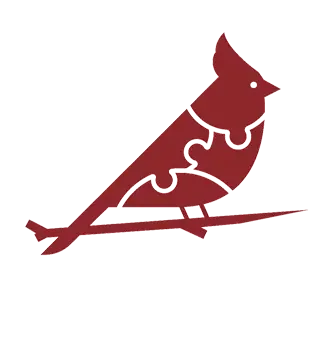Applied Behavior Analysis (ABA) is a widely respected, evidence-based approach used to support children with autism in acquiring essential life skills. One of the most effective tools within ABA is task analysis. This strategy breaks down complex behaviors into smaller, more manageable components.
When implemented correctly, task analysis in ABA provides children with autism a clear, structured path toward mastering everyday tasks, building independence, and reducing frustration. At Cardinal Pediatric Therapies, our ABA therapy services give children with autism a new chance.

What Is Task Analysis in ABA?
Task analysis in ABA is a teaching method that breaks down a multi-step task into its individual actions or behaviors. These steps are then taught in sequence, allowing a child to learn each one gradually until the whole task can be performed independently.
This method is particularly effective for children with autism, who may struggle to complete tasks that involve multiple steps, abstract thinking, or unfamiliar routines. By focusing on one step at a time, therapists and parents can help children gain confidence and competence.
Example of task analysis: For a task like brushing teeth, a therapist might break it down into steps such as:
- Pick up the toothbrush
- Turn on the water
- Wet the toothbrush
- Apply toothpaste
- Brush top teeth
- Brush the bottom teeth
- Rinse toothbrush
- Turn off the water
- Rinse mouth
- Put the toothbrush away
Each of these steps can be taught using prompts, modeling, and reinforcement until the child can complete the task independently.
Why Task Analysis Works for Children with Autism
Children with autism often experience challenges with executive functioning, sequencing, and generalizing skills. They may struggle to comprehend multi-step instructions or feel overwhelmed by complex routines. Task analysis addresses these needs by providing:
Structure and Predictability
Each task is taught in a clear, predictable order. This structure helps reduce anxiety, increases focus, and supports better learning outcomes.
Focused Instruction
Task analysis allows therapists to target the specific steps a child is struggling with. Instead of re-teaching an entire task, instruction can focus on the one step that needs support.
Gradual Skill Building
Children gain confidence as they master each step. Over time, this leads to successful completion of the whole task, building self-esteem, and promoting independence.
Better Generalization
Once a child learns a task using task analysis, it’s easier for them to apply that skill in different settings. For example, if they know how to wash their hands at home, they are more likely to succeed in doing so at school or in a public restroom.

When to Use Task Analysis in ABA Therapy
Task analysis can be used to teach a wide range of skills, including:
- Self-Care Routines: Bathing, dressing, brushing hair, using the toilet
- Household Tasks: Cleaning up toys, making the bed, setting the table
- Academic Behaviors: Writing a sentence, organizing a backpack, solving math problems
- Social Skills: Initiating a greeting, asking for help, participating in group play
Whether a child is working on functional life skills or classroom readiness, task analysis can be customized to meet their developmental level.
How to Create a Task Analysis in ABA
At Cardinal Pediatric Therapies, our Board-Certified Behavior Analysts (BCBAs) use a systematic approach to developing and implementing task analyses for children receiving ABA therapy.
Step 1: Identify the Target Skill
Begin by selecting a skill that is meaningful, age-appropriate, and aligned with the child’s goals. It should be observable and measurable.
Example: Preparing a simple snack, such as making a peanut butter and jelly sandwich.
Step 2: Observe and Analyze the Task
Break the task into its smallest steps. Observe someone performing the task to understand its natural sequence. Each step should be discrete, clearly defined, and achievable by the child.
Step 3: Choose a Chaining Method
To teach the steps, a therapist may use one of the following chaining strategies:
- Forward Chaining: Teach the first step first, then move forward step by step
- Backward Chaining: Teach the last step first, then build backward
- Total Task Chaining: Teach the entire task every time, providing support only where needed
The best chaining method depends on the child’s learning style and motivation.
Step 4: Write Clear Instructions
Use language that is developmentally appropriate for the child. Visual supports or pictures may also be helpful.
Example: Instead of saying “Brush thoroughly,” say “Brush top teeth 10 times.”
Step 5: Teach Each Step Systematically
Using prompts, modeling, or physical guidance, teach each step until the child can perform it independently. Reinforce successful attempts to build motivation and momentum.
Step 6: Monitor Progress and Adjust
Collect data on the child’s performance for each step. If progress stalls, adjust the teaching strategy, reinforce more frequently, or simplify the task.

Benefits of Using Task Analysis in ABA Therapy
The effectiveness of ABA task analysis lies in its flexibility and scalability. It can be used across ages, abilities, and settings, making it a cornerstone of effective autism therapy.
Key Benefits of Task Analysis in ABA
- Promotes mastery of functional skills
- Encourages independence
- Reduces frustration and confusion
- Improves learning retention
- Facilitates parental involvement at home
- Supports long-term developmental goals
Children are more likely to succeed when they understand what is expected and receive support at every stage of the learning process.
The Role of Parents and Caregivers
At Cardinal Pediatric Therapies, we believe that parent involvement is crucial to a child’s success. Our therapists train parents in the use of task analysis, enabling them to reinforce progress at home and support their child’s development.
Parents learn how to:
- Break down skills into smaller steps
- Use visual supports and prompts
- Reinforce correct responses
- Track their child’s progress
- Encourage generalization of skills across environments
This partnership between therapist and parent ensures continuity of care and helps children progress more quickly.
Real-World Applications of Task Analysis
Here are a few examples of how task analysis might be applied in therapy or at home:
- Dressing for School: Put on underwear → Put on pants → Put on shirt → Zip jacket
- Going to Bed: Brush teeth → Put on pajamas → Choose a book → Get in bed → Lights off
- Using the Bathroom: Pull down pants → Sit on toilet → Wipe → Flush → Wash hands
These types of routines, when broken into manageable parts, become achievable and less stressful for children with autism.

Why Task Analysis Matters in ABA
Task analysis in ABA provides a structured, step-by-step method for teaching children with autism how to complete complex skills with confidence. By focusing on individual components of a task and using reinforcement strategies, therapists help children build independence and reduce frustration.
For parents seeking autism therapy services in Arizona or North Carolina, Cardinal Pediatric Therapies offers personalized ABA therapy that includes task analysis, chaining, parent training, and more. Our goal is to help every child grow, thrive, and succeed in the most critical areas of life.











